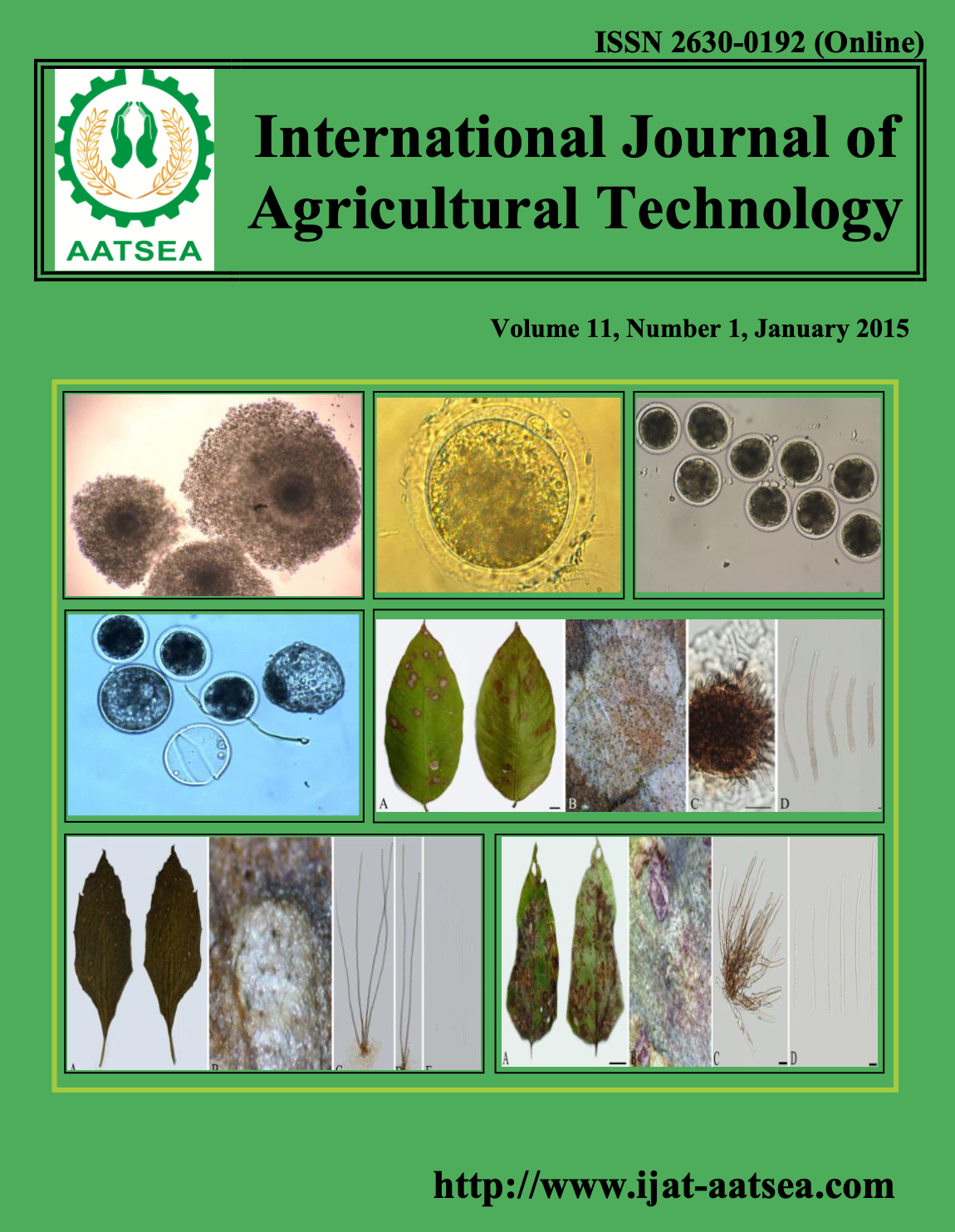In vitro assessment of shed sheabutter tree leaf as a potential feedstuff for goat production
Main Article Content
Abstract
Article Details

This work is licensed under a Creative Commons Attribution-NonCommercial-NoDerivatives 4.0 International License.
References
AOAC (1984). Official Methods of Analysis 14th edition. Washington, D.C.: Association of Official Analytical Chemists.
Abidemi, T. A., Oyedepo, A. J., Oluwadare, I. and Agbotoba, M. O. (2009). Nutrient content and anti-nutritional factors in shea butter (Butryospermumparkii).
Duncan, D. B. (1955). Multiple range and multiple F tests. Biometrics 11:1-42.
Fawole, M. O. and Oso, B. A. (1998). Laboratory manual of microbiology. 2nd edition. Ibadan, Nigeria: Spectrum Books Limited. 78 pp.
Galyean, M. L. (2010). Laboratory procedures in animal nutrition research. Department of Animal and Food Science, Texas Tech University, Lubbock.
Ghorbani, G. R., Morgavi, D. P., Beauchemin, K. A. and Leedle, J. A. Z. (2002). Effects of bacterial direct-fed microbials on ruminal fermentation, blood variables, and the microbial populations of feedlot cattle. Journal of Animal Science 80:1977-1980.
Isah, O. A., Oguntuyo, S. A., Dawodu, R. O., Diya, O. O., Afolabi, M. O. and Omoniyi, L. A. (2013). Feed utilization, rumen parameters and microbial profile of goats fed different tropical browse plants with Pennisetumpurpureum as basal diet. Pacific Journal of Science and Technology 14:397-405.
Khan, M. A., Nisa, M. U. and Sarwar, M. (2003). Techniques measuring digestibility for the nutrititional evaluation of feeds. International Journal of Agric Biology 5:1-8.
Mosimanyana, B. M. and Kiflewahid, B. (1991). The value of browse as ruminant feeds; the case of Colophospermum mopane. Animal Production Research Unit.
Njidda, A. A. (2010). determining dry matter digestibility of semi-arid browse species of north eastern nigeria using the in vitro techniques. Nigerian Journal of Basic and Applied Science 18:160-167.
Ramin, M., Alimon, A. R., Panandam, J. M., Sijam, J. M. K., Javanmard, A. and Abdullah, N. (2008). Digestion of rice straw and oil palm fronds by microflora from rumen and termite bacteria, in vitro. Pakistan Journal of Biological Sciences 11:583-588.
Reed, D. J. and Van Soest, P. J. (1985). Estimating the nutritive value of crop residue and agro-industrial by-products by chemical methods. Proceedings of the FAO/ILCA Expert Consultation, ILCA Headquarters, Addis Ababa.
SAS (1999). User’s guide: Statistics (SAS / SPSS version 10) Cary, NC.: SAS Institule Inc.
Van Soest, P. J., Rebortson, B. and Lewis, B. A. (1991). Method for dietry fiber, neutral detergent fiber and non starch poly sacharides in relation to animal nutrition. Journal Dairy Scienc 74:3583-3597.
Wood, C. D., Thorne P. J., Romney, D. L. and Rosales, M. (2000). Laboratory techniques appropriate for evaluation ruminant feeds for less developed countries with particular reference to the potential use of in vitro gas production method. Natural Resources Institute, University of Greenwish, Central Avenue, Chatham Maritime.
Yousuf, M. B. (2004). Effect of varying urea level in a shed shea buttrr leaf-based diet on intake and digestibility of nutrients in west african dwarf goats. Journal of Animal Production Research 19:45-50.


